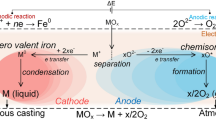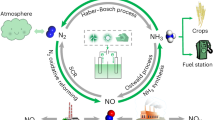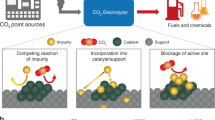Abstract
THE writer's view of the passivity of chromium, manganese, iron, cobalt and nickel (NATURE, March 28, 1925, 115, p. 455) may now be extended and correlated with the recent work of H. S. Taylor (Proc. Roy. Soc., 1925, A, 108, p. 105) and of E. F. Armstrong and T. P. Hilditch (ibid., p. 111) on catalytic action at the surface of nickel, with that of J. Heyrovský (Rec. trav. chim., 1925, 44, p. 499) on overvoltage, and with that of T. M. Lowry on the nature of chemical action. This view is based on Bohr's distribution of electrons within the atom. It supposes that in the elements mentioned the number of electrons in the outermost orbit is “ideally” between one and two, and is therefore either one or two, and that in consequence the atoms of such elements can never be electrically neutral in the same sense as atoms of sodium or of zinc. The experimental evidence favours calling the state with one electron in the outer orbit passive, and that with two electrons in the outer orbit active. The difference in potential between the two states of each of these metals is about 1 volt.
This is a preview of subscription content, access via your institution
Access options
Subscribe to this journal
Receive 51 print issues and online access
$199.00 per year
only $3.90 per issue
Buy this article
- Purchase on Springer Link
- Instant access to full article PDF
Prices may be subject to local taxes which are calculated during checkout
Similar content being viewed by others
Author information
Authors and Affiliations
Rights and permissions
About this article
Cite this article
RUSSELL, A. Passivity, Catalytic Action, and other Phenomena. Nature 117, 47–48 (1926). https://doi.org/10.1038/117047a0
Issue Date:
DOI: https://doi.org/10.1038/117047a0
Comments
By submitting a comment you agree to abide by our Terms and Community Guidelines. If you find something abusive or that does not comply with our terms or guidelines please flag it as inappropriate.



